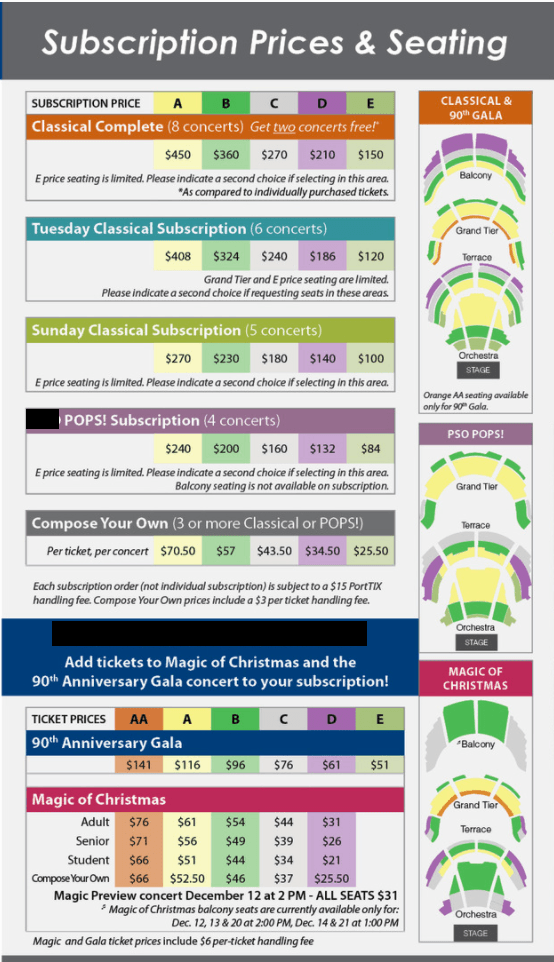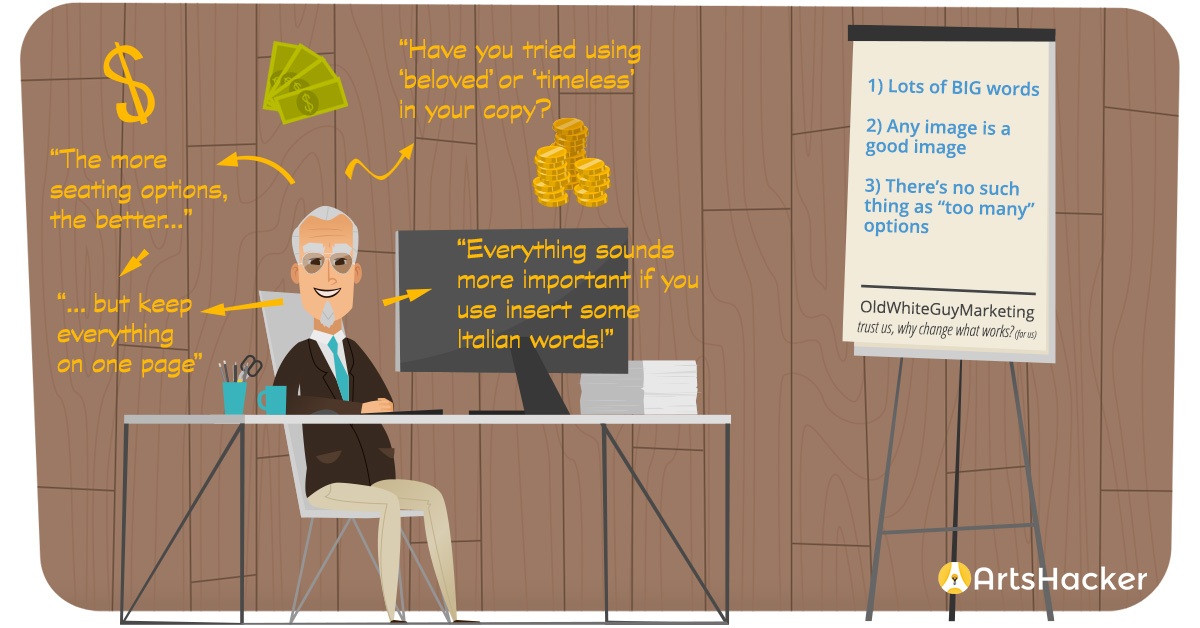All of us folks who work at arts organizations know that we need a steady stream of new people coming in to stay in existence. Right? Right.
We, as organizations, repeat the mantra that we want new people to come through our doors. However, we also continually do things that seem to demonstrate the opposite.
If we are serious about getting and keeping new patrons, we are going to need to pay more attention to our data and get out of our comfort zone a bit. Let’s start with a few things we need to stop doing immediately.
1. Using complicated messaging that only experts understand
The standard descriptive copy for an arts event usually contains language that is aimed at people who already know a lot about the art form. There is usually lots of flowery language with words like “beloved,” “stunning,” and “timeless.” I’m not saying that those words don’t accurately describe the show. However, they aren’t very descriptive to a person who knows nothing about it.


This type of messaging is overwhelming to a potential new ticket buyer and, frankly, it turns them off. This directly plays into the feeling that they won’t understand what is going on at the concert/opera/play and starts things off on the wrong foot.
We need to start using more “mainstream” messaging and talk about our offerings in “regular” words. Let’s dare to stop treating the art as being so precious that we can’t talk about it like normal people.
[box type=”note” icon=”none”]Tip: A few years ago, when I was at Palm Beach Opera, we worked with the fabulous folks at Tanj to create more mainstream messaging and taglines for each opera. I found that having an outside perspective incredibly valuable in creating the messaging and I would recommend reaching out to a branding expert or copywriter for help.[/box]
2. Only showing stodgy performance photos in marketing materials
Sure, we may not always have super provocative production photos to use in our materials, but we’ve got to make a change from the status quo. Traditional production photos are barely enticing to regular patrons let alone new patrons.

Let’s see what we can do with creative graphic design to make production photos more exciting and modern. Or, perhaps we move away from those types of photos altogether and use completely designed images that are kinetic and compelling.
Along those same lines, let’s start putting photos of people enjoying the experience at the theater in our materials as well. And I don’t mean stock photos, either. I mean real photos of people having fun at the theater. When you schedule your photographer to shoot archival, just ask them to come a little early to grab some shots of folks in the lobby and in the seats.
[box type=”note” icon=”none”]Tip: Check out my colleague Jonathan Eifert’s post here for some additional thoughts on this. Drew McManus also has some helpful tips on creating great looking website images as well.[/box]
3. Overwhelming people with price and seat information
The standard price chart and seat map for an arts organization tends to be a bit complicated. We all have many price and seating sections in our theater. This detailed information may be wanted by our longtime ticket buyers but a new patron isn’t going to respond the same way.

All a new person wants to know is the cost for “good” seats. (One could argue that this is also the case for someone who has bought before…) Let’s not over complicate matters and potentially scare people off by presenting comprehensive price charts.
As an alternative, include a simple price list of “good” seats at various price points. (If you are doing this in an email and have extra space, you could also include a photo of the view of the stage from each of the aforementioned sections.)
Ok, deep breaths…
So you may be thinking, “This all sounds well and good but I need to keep the fancy language, traditional production photos, and full price lists for my existing ticket buyers!” Here is the key to making this work: SEGMENTATION.
You can accomplish this by segmenting your communications into those targeted to existing ticket buyers and those designed to bring in new ticket buyers. Yes, it is a bit of extra work, but it is key in sending the right message to the right people at the right time.
Here are some quick ways you can do it:
- Stop sending your full season brochure out to your entire list. Only send it to previous ticket buyers and extremely high-level prospects. For lower level prospects, consider sending a smaller brochure or even a series of postcards with catchy, compelling messaging and images that drives them to a landing page on your website just for new prospects.
- Instead of sending the same sales postcard for your upcoming show to your entire list, create two slightly different versions of it: one for existing buyers, and one for potential new buyers. You could even work it so that the front of the card is basically the same but the back is different.
- Create different Ad Sets in your paid Facebook campaigns; one using a Custom Audience of your past ticket buyers, and another that is made up of new potential buyers. Use appropriate messaging for each.
- Send two versions of sales emails leading up to the show: one for previous buyers and one for people who are on your list but have not bought. Make sure that the messaging matches the segment! For those who have not bought, perhaps include information about restaurants near the theater for a pre- or post-show meal, a guide to parking, and any other tips you can offer to make their experience better.
All right now. Let’s get to work.
